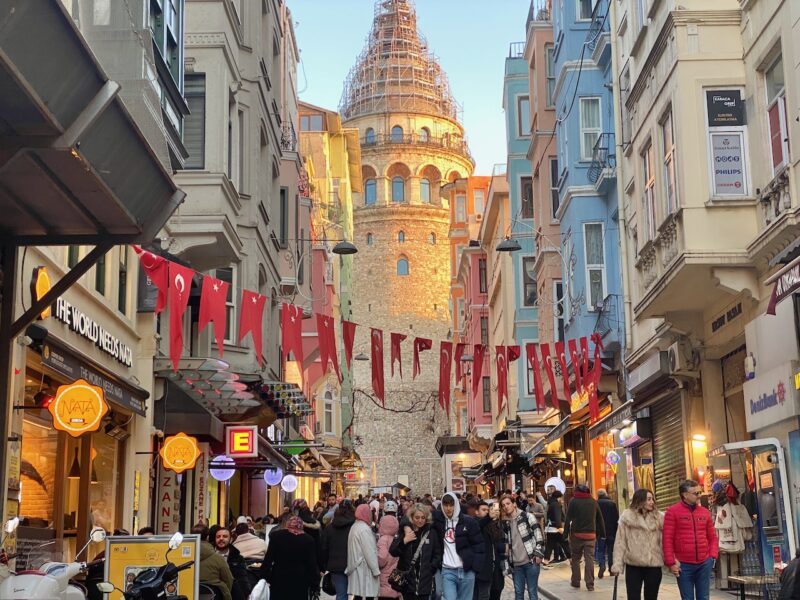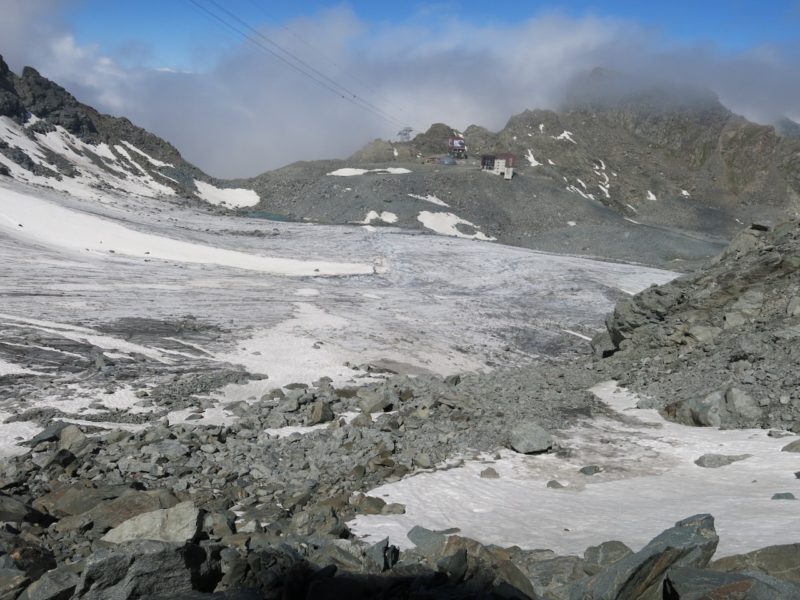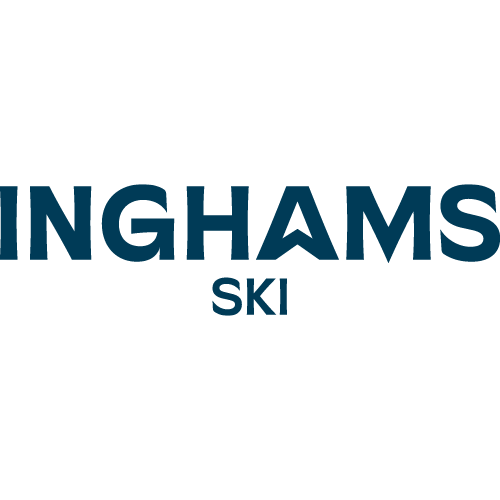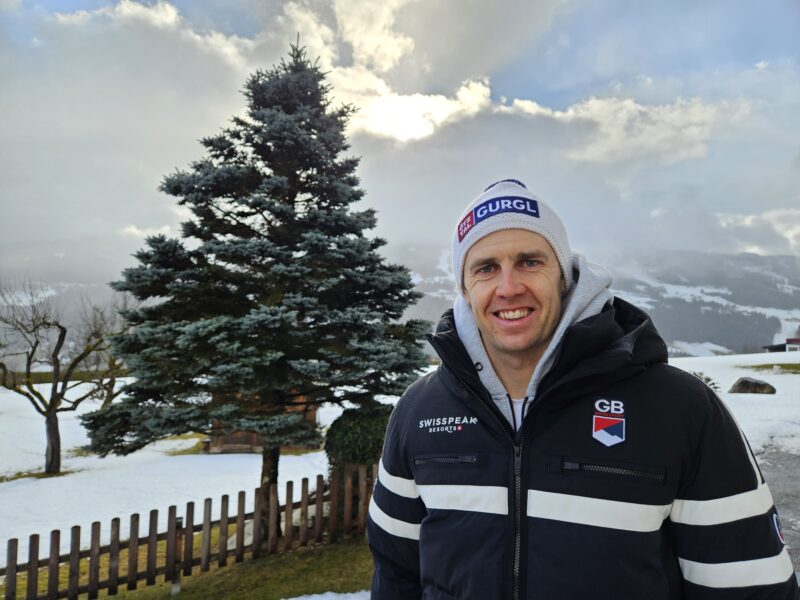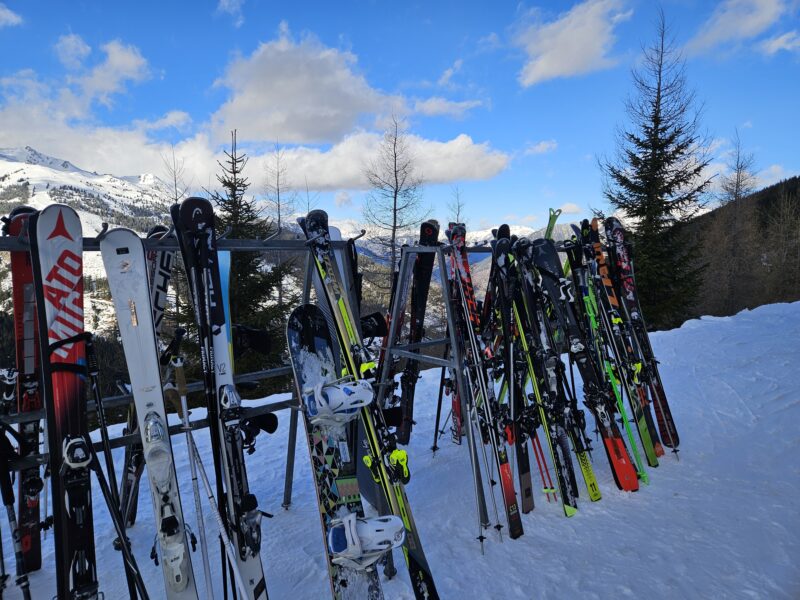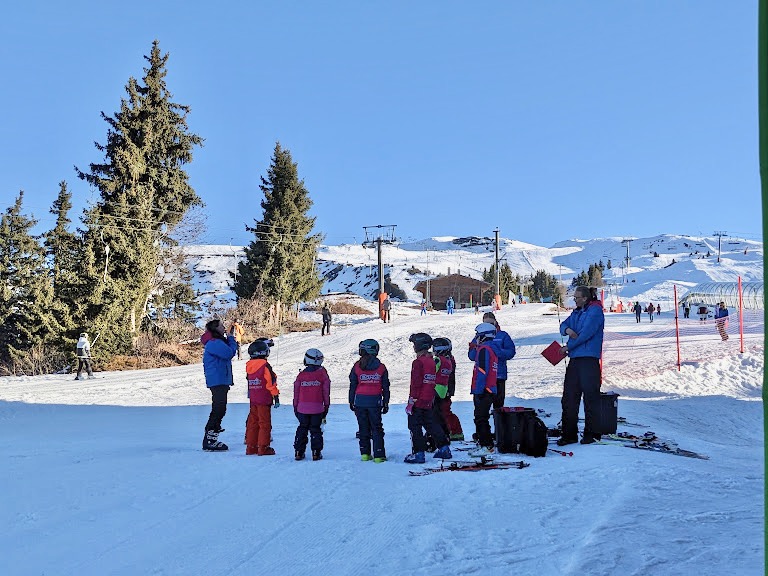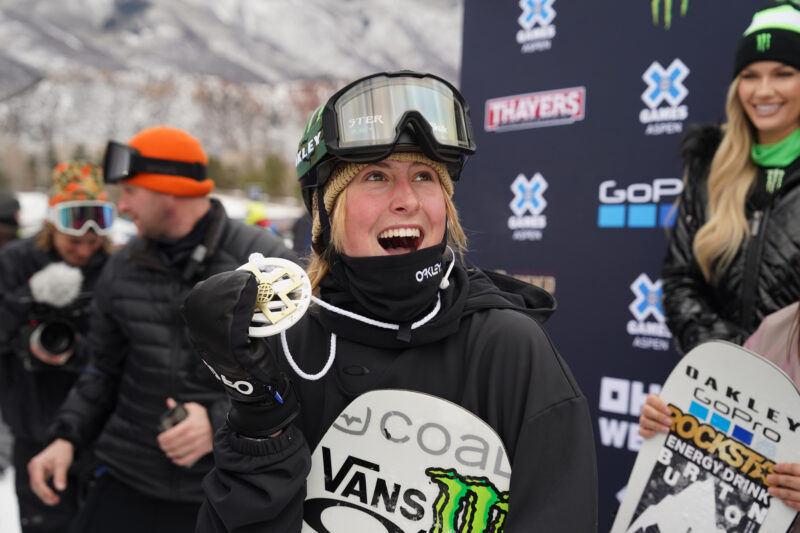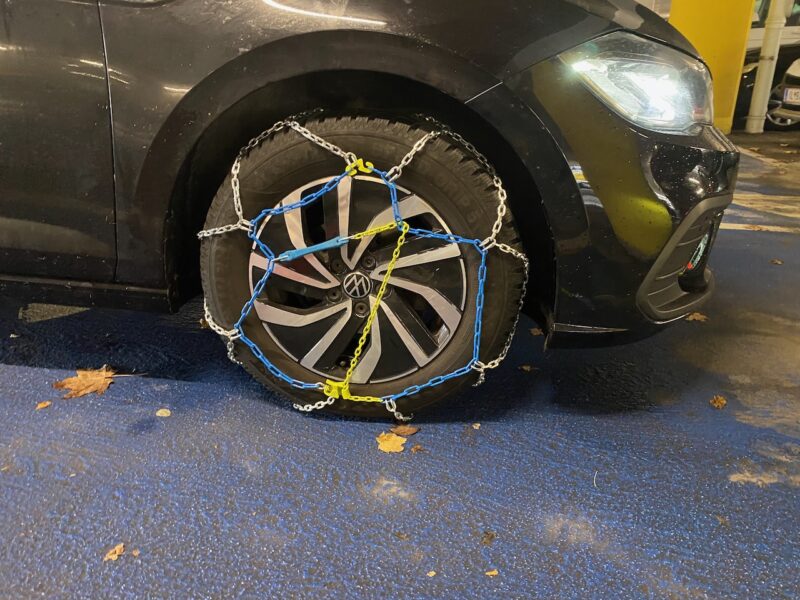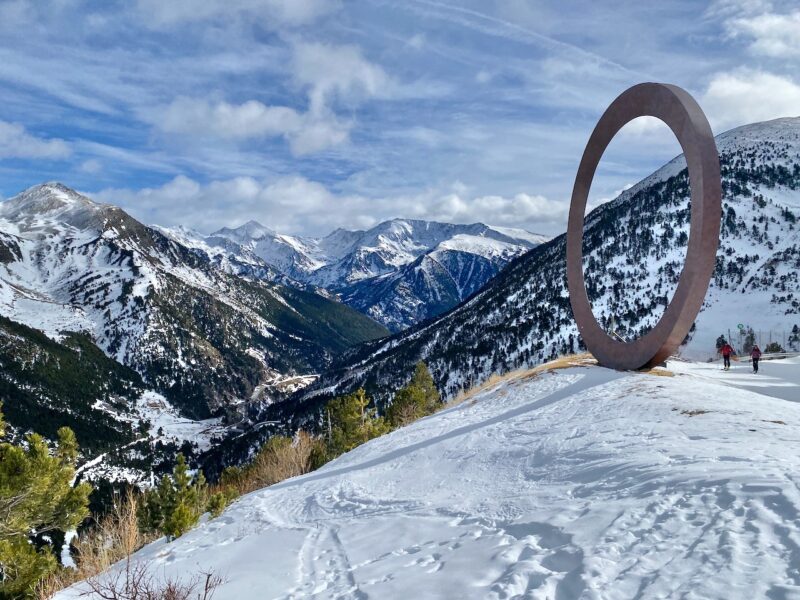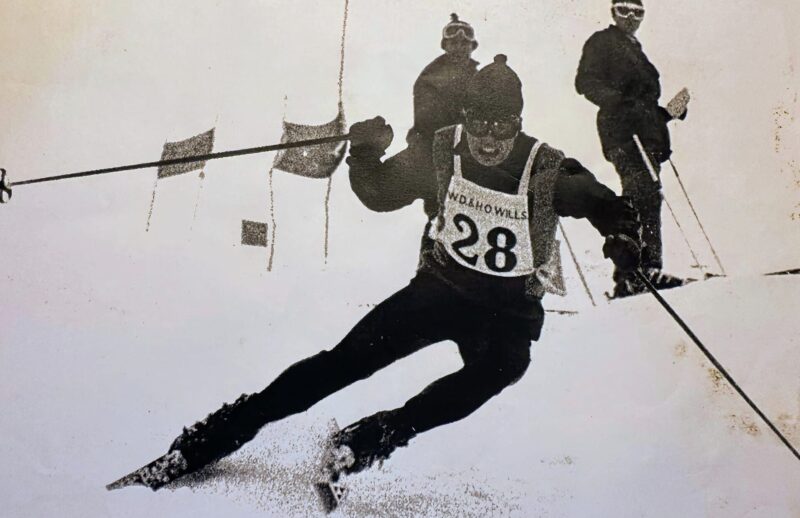PlanetSKI Reports from Abruzzo in Southern Italy
20th February 2023 | Vanessa Fisher, Abruzzo, Italy.
Last modified on February 26th, 2023
Abruzzo is an Italian region to the east of Rome that contains the Apennine Mountains – home to a number of fabulous ski areas that are little-known to British skiers and snowboarders.
The mountainous area in the west of the province includes the highest massifs of the Apennines – the Gran Sasso d’Italia and the Maiella.
The region is also home to Calderone, one of Europe’s most southerly glaciers.
It is judged to be in southern Italy due to its historical and economic links to Naples.
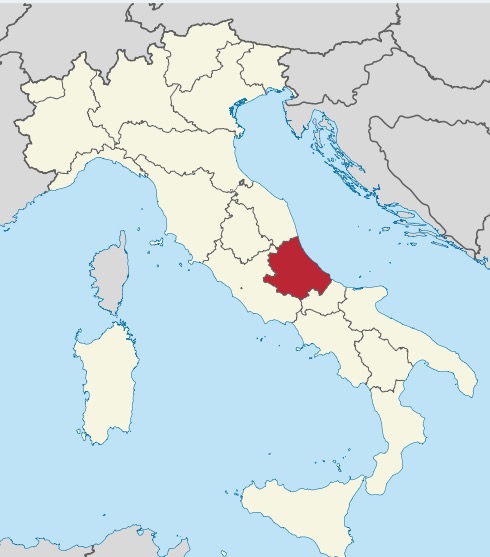
Abruzzo, Italy.
I chose it as my destination for a family ski break this half-term.
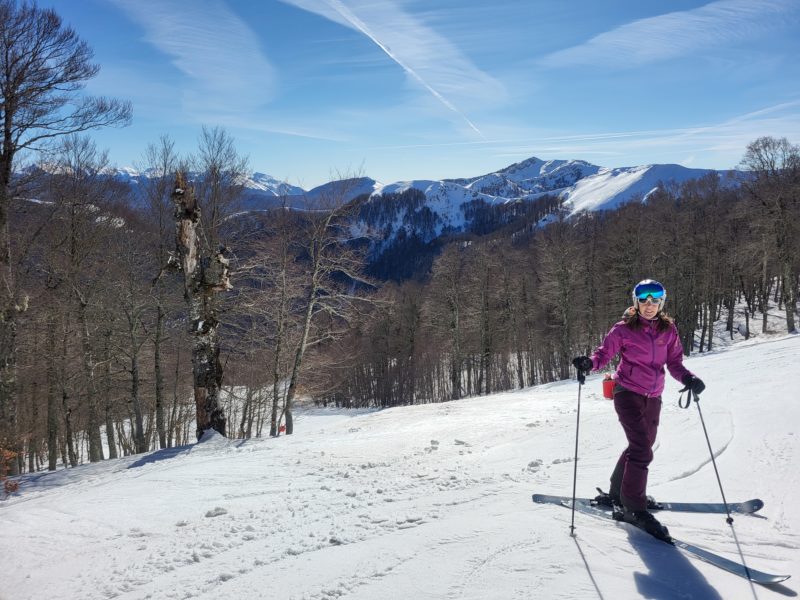
Vanessa at Pescasseroli. Image © Vanessa Fisher
We were looking for a little-known ski area and one where we could get away from the crowds.
One where the half-term hordes could be avoided and where there was no local ‘February holiday’.
Abruzzo seemed an obvious choice, and it was brought to my attention by an earlier article on PlanetSKI.
I made contact with the local operator, Ski Abruzzo, and we booked in for a four-night stay.
I had been advised to avoid the weekends, which get busy with locals from Naples, Pescara and Rome.
15,000 people are on the slopes at the weekend – it’s just 5,000 on weekdays.
We booked a Monday to Friday trip, with affordable flights to Naples at £200 per person, and with car rental just £70 for 4 days.
Geneva flights in the same period were £400 per person with car rental at £300.
The views as we drove to the ski area were simply stunning.
As we arrived at our hotel in Castel di Sangro, Abruzzo, a wolf ran out.
It stopped and stared right at us.
A wolf!
Almost half of the region’s territory is protected through national parks and nature reserves, more than any administrative region on the continent, leading it to be dubbed ‘the greenest region in Europe’.
There are three national parks, one regional park, and 38 protected nature reserves.
These ensure the survival of rare species, such as the golden eagle, chamois, the Marsican brown bear and the one we spotted – the Apennine wolf.
Abruzzo’s parks and reserves host 75% of Europe’s animal species.
It was a rare and beautiful sighting of this iconic wild animal of the region, and key feature of the ‘Alto Sangro’ ski lift logo.

Local logo
Driving from our hotel base at Castel di Sangro, with the beautiful Sangri river alongside it was 20 minutes to the ski area Roccaraso, with its four entry points:
- Monte Pratello
- Pizzalto
- Aremogna
- Gravare
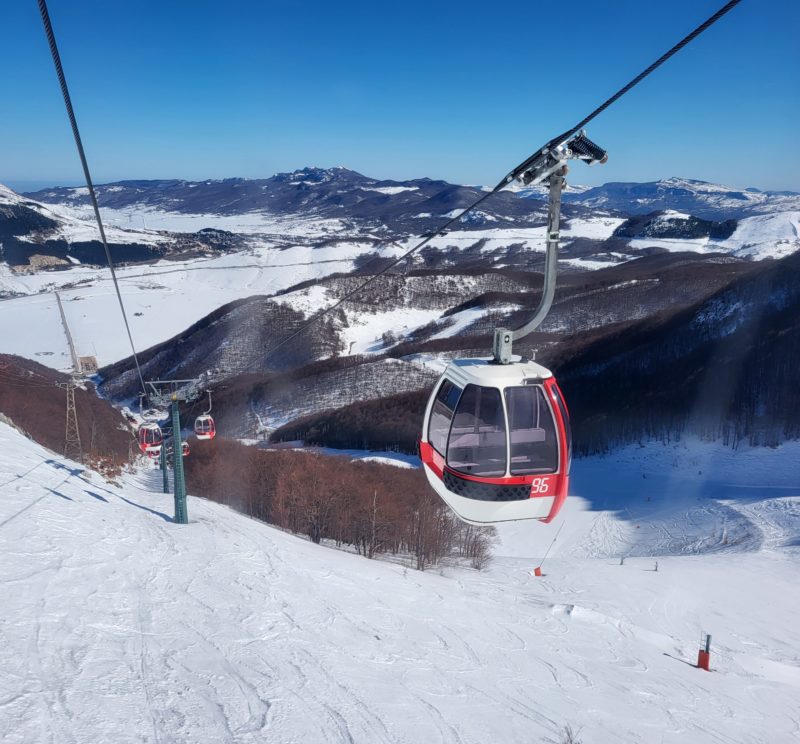
Bubble lift to Toppe del Tesoro from Aremongna. Image © Vanessa Fisher
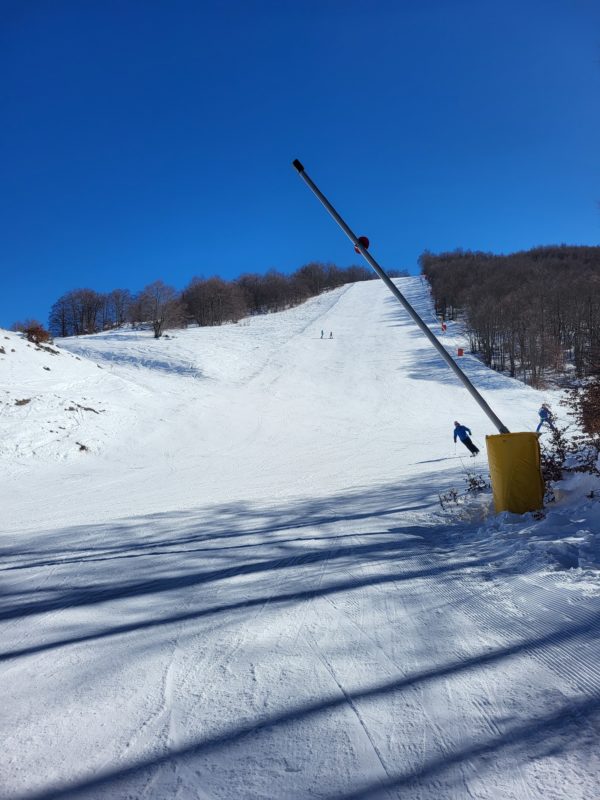
Quiet slopes of Roccaraso. Image © Vanessa Fisher
You wind up through the gentle mountain roads, across an incredible white plateau, that stretches endlessly white as far as the eye can see.
It has more of a Canadian feel, than skiing in the south of Italy.
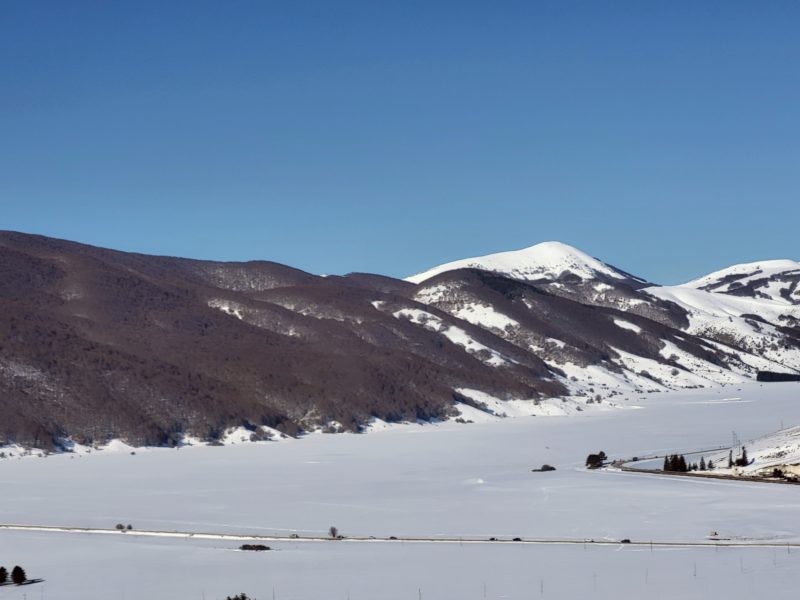
Snowy plateau below Roccaraso. Image © Vanessa Fisher
The mountain range is impressive – 100km of slopes, rising from this white plateau at 1,309m to 2,141m.
From the highest lift, Toppe del Tesoro, there are gorgeous views across to Grand Sasso at 2,912m, the highest mountain in Abruzzo.
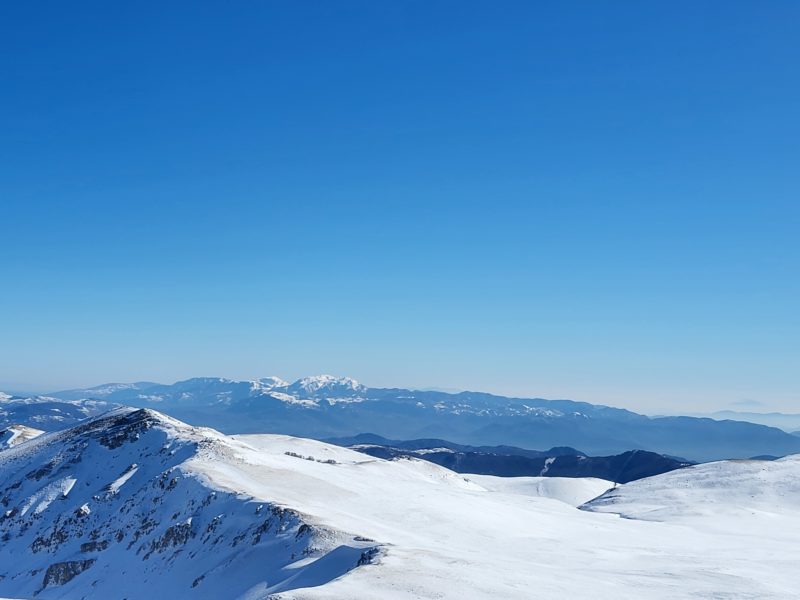
Grand Sasso from Tope del Tesoro. Image © Vanessa Fisher
Small forests of beech trees line many of the runs and give the mountains a dark pink-red glow in the bright sunshine.
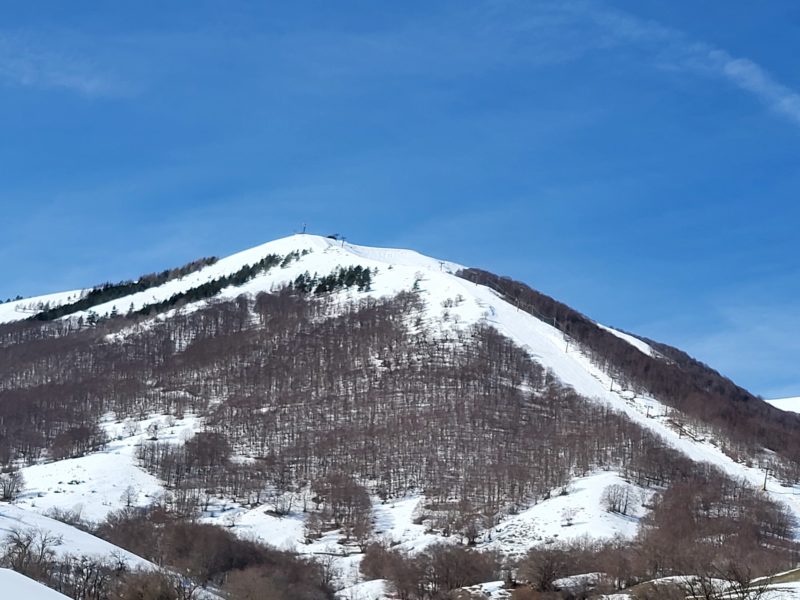
Pescasseroli at Monte Vitelle 1945m. Image © Vanessa Fisher
Mostly north facing, and with dry air and snow coming from the Balkans, the slopes remain in excellent condition.
On my visit there were less ‘scraped off’ pistes than we had been skiing in the French Alps just 10-days earlier.
The areas didn’t open until mid-January this season, due to lack of snow, but there is 100% snow cannon cover, and temperatures of -15c the week before we arrived.
The little amount of fresh snow and with few skiers, gave us some excellent conditions.
Families looking for a quiet, short break for half term should consider the Appenines.
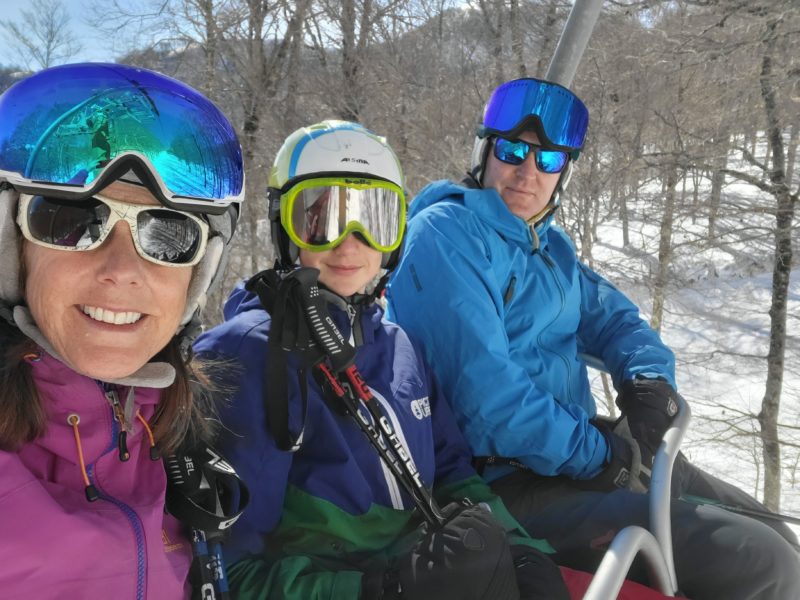
Image © Vanessa Fisher
The Italians love families and are extremely welcoming.
It’s worth the slightly longer flight to get there for all the advantages highlighted already, value for money, great food, short transfers (although a slightly longer flight to Naples), gorgeous sunshine and blue skies.
Another thing we loved was exploring the little ski paths through the beech trees, winding in and around the trees with our youngest, Zac.
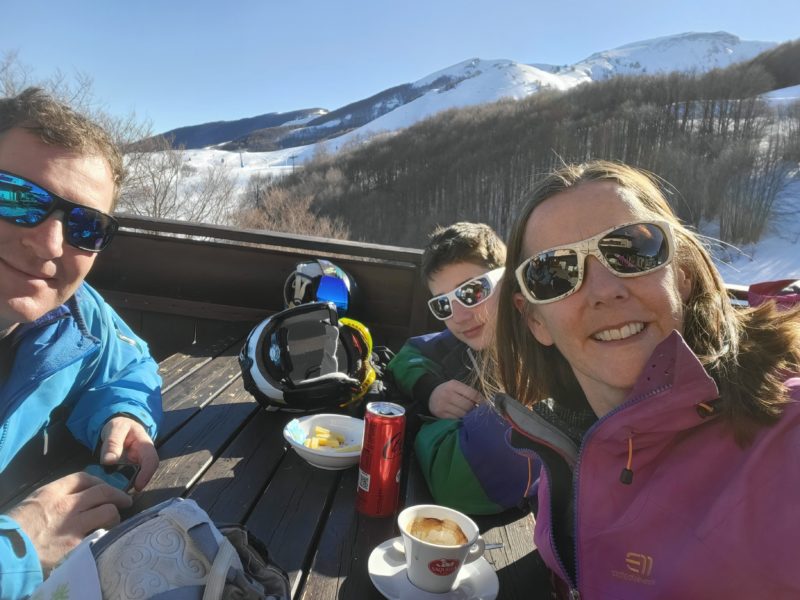
Image © Vanessa Fisher
The Sport Village Hotel also impressed us with its entertainment offered for families with younger children.
Every evening, several staff were on hand in a designated area, to play games, table tennis for teens, indoor archery, “baby disco” and more.
The adult-only spa was a great escape from all of the above.
The hotel’s shuttle bus is perfect for taking families to the slopes too.
We drove in to the Abruzzo National Park on our third day, along the edge of beautiful Lake Barrea and past the medieval village of Opi.
It led to the tiny ski area of Pescasseroli.
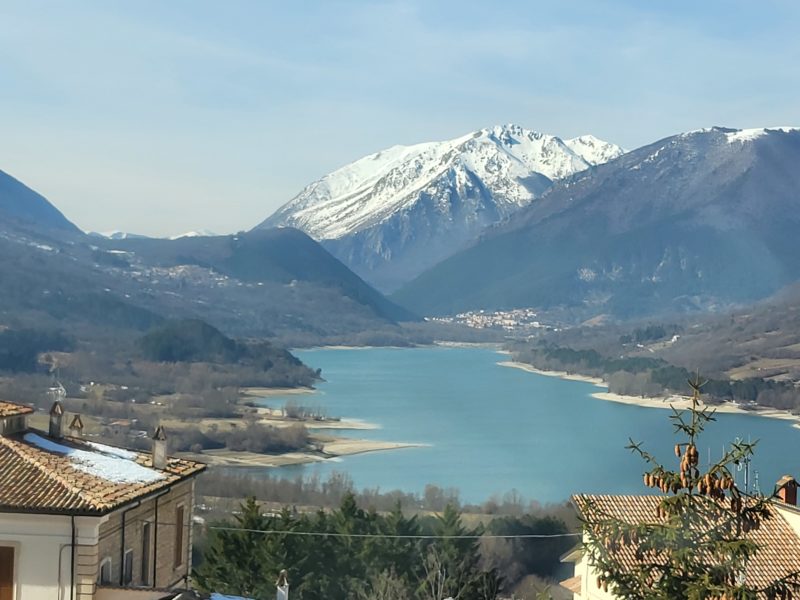
Lake Barrea, Image © Vanessa Fisher
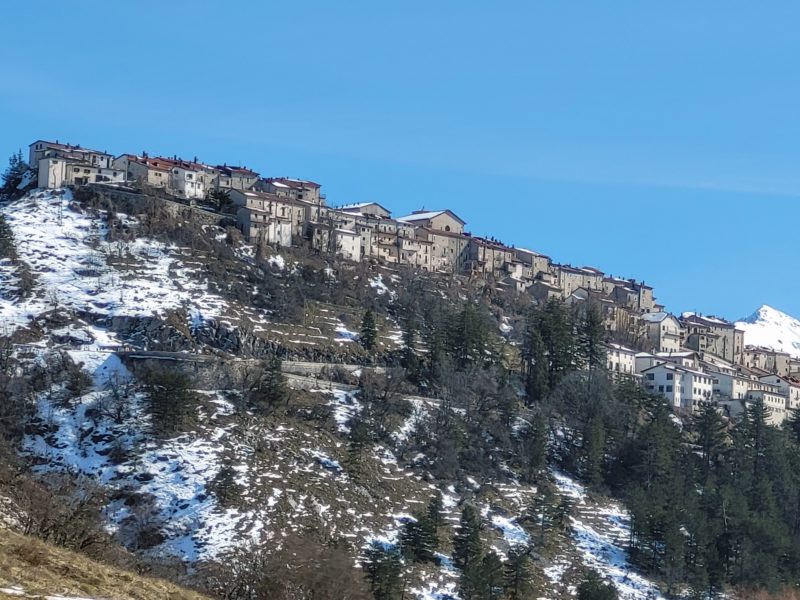
Medieval village Opi. Image © Vanessa Fisher
Busier in summer than winter, with visitors keen to get a sighting of the Marsican brown bear, just a handful of lifts take you around this small resort.
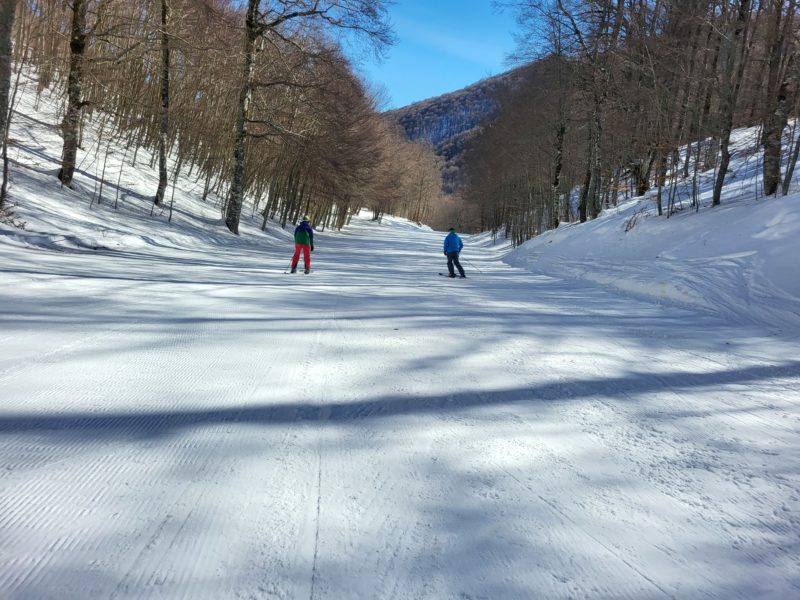
Quiet slopes at Pescasseroli. Image © Vanessa Fisher
The main chair base at 1,167m rises to 1,945m with a steep, pitchy black run down the front side, soft in the warm sunshine.
One other chair accessed a handful of tree-lined red runs at Monte Ceraso.
Aside from two small ski school groups and a handful of individuals, we were the only skiers and definitely the only English.
My rusty Italian was put into practice trying to exchange our area ski pass for a one day ski pass.
Calling in at Hotel Daniel for ‘caffe e torta’ on our way back, hotelier Pietro explained the many difficulties for this tiny resort based within the national park, with development restrictions and lack of infrastructure – no public bus or train to fit the eco-policy they are trying to work within.
Once under the Inghams programme, but with few transport options, it has long since been removed from the British radar.
Pietro showed us his gorgeous dog, lying in the sunshine, just recovering from a wolf attack, a common issue within the parks.
Pietro shared how he chased the two wolves off with his snow shovel.
The lift system at Roccaraso was surprisingly good, with a new 10-seater bubble at Aremogna and a fast 6-seater from Pizzalato being the highlights.
As a local told us, no one ‘rushes in Abruzzo’, so on the slower lifts we just tried to be ‘more Italian’.
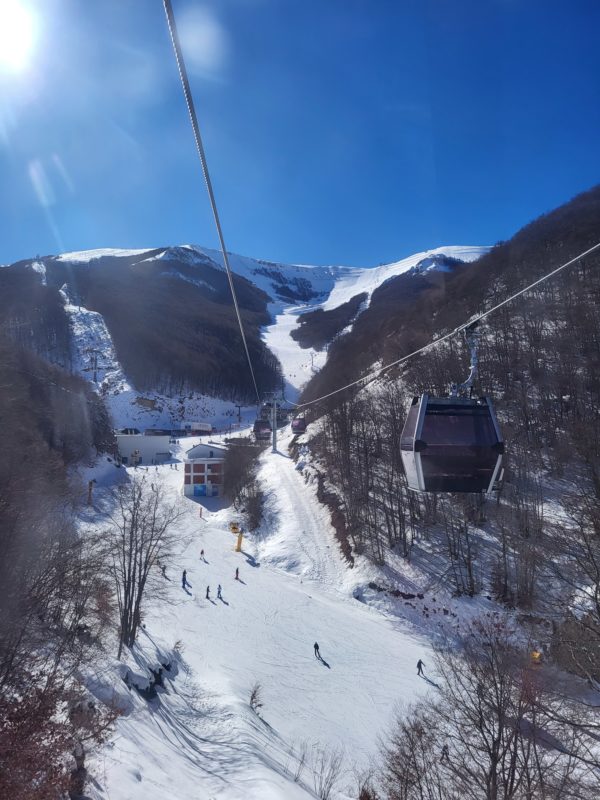
Roccaraso Beech lined slopes. Image © Vanessa Fisher
For a four day, half term ski break, it ticked a lot of my boxes:
- Short transfers (Ski Abruzzo can provide transfers for non-drivers)
- Very few lift queues
- Excellent value for money
- Modern hotel stay at the Sport Village Hotel & Spa
- Great snow and lovely sunshine
- Somewhere out of the box
We’ll be back and I recommend you take a look at it too if it is the sort of ski holiday that interests you.
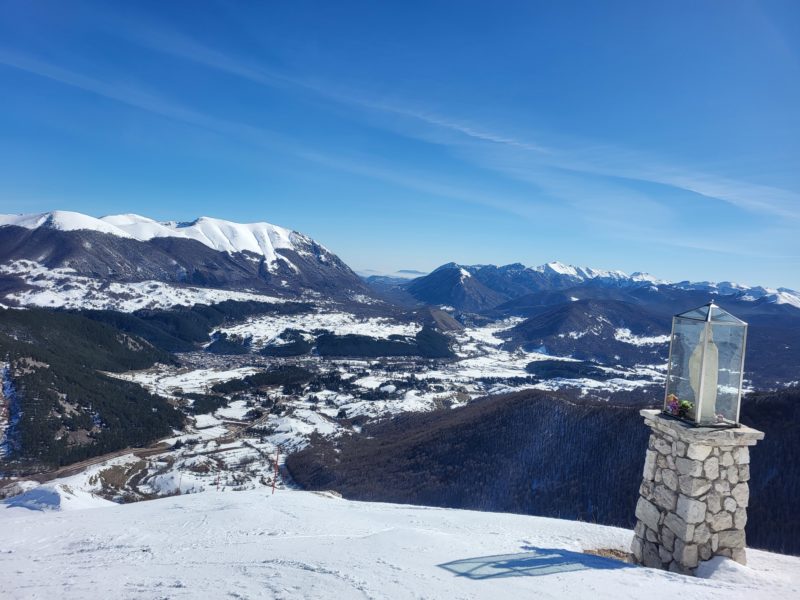
View from Monte Vitelle down to Pescasseroli village. Image © Vanessa Fisher
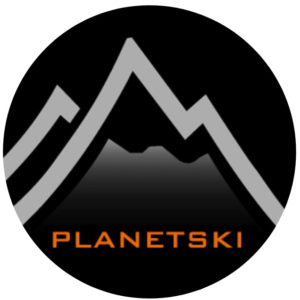
PlanetSKI logo

